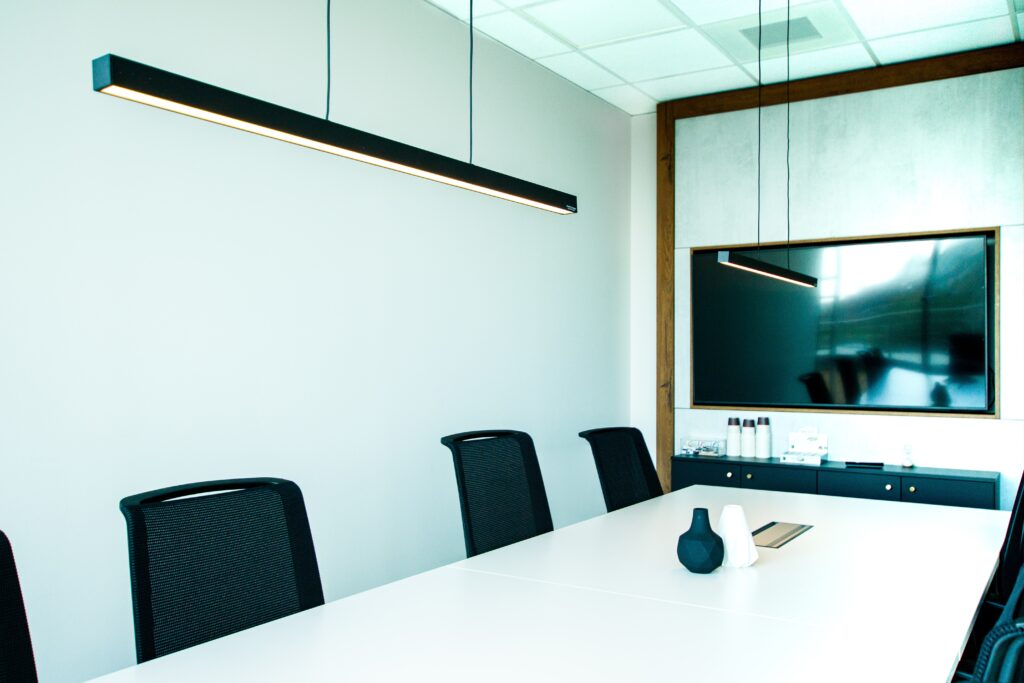In the era of hybrid meetings, the age-old formula for conference rooms can sometimes fall flat. Can all participants see and hear each other? Do employees struggle with connectivity issues? This blog will outline some common conference room pitfalls and how to improve them.
If you have an office, there’s a fair chance you also have a conference room. Providing space for internal collaboration and client meetings, the design of these spaces has generally followed a formulaic approach that creates a “round table” setting conducive to in-person meetings. In the era of hybrid work, however, the classic conference room faces some challenges. Whether your team operates on a hybrid model or has fully returned to the office, here are some ways to optimize your conference room for any kind of meeting.
Prevent “Can You Hear Me Now?”
Large conference rooms that are designed from an aesthetic standpoint can suffer from acoustical issues – those glass walls and windows are actually making you harder to hear on a call! From a design perspective, this can be mitigated by adding acoustical treatments in the room.
Even in a conference room designed with acoustics in mind, things get tricky on multi-person calls. If the room is only equipped with a single, outdated microphone and speaker, those seated furthest away may have trouble hearing what a remote participant is saying, and vice versa. Try adding more microphones and speakers, placed in strategic spots around the room; a single but more powerful soundbar is a low-profile option that can be placed directly below a screen for a streamlined look that doesn’t sacrifice function.
Upgrade Your Screens and Cameras
Speaking of screens, can everyone in the meeting see each other? This is often not the case in hybrid meetings where there are both virtual participants and multiple people together in the same physical space. While a standard camera will not capture the width of a conference room, one that provides a 180-degree viewing angle will let everyone be seen. For businesses that want professional-grade video quality in their conference rooms, a pan-tilt-zoom camera is the way to go. These cameras can be operated by remote control and offer multiple perspectives, zooming, and even automatic speaker tracking.
Leave Options for Connectivity
A fully wireless conference room sounds sleek, but the reality is that you should always have a backup available. Wifi is becoming the office standard, but a conference room should also have ethernet available. This not only provides backup in the event of a wifi crash but also equips the room with a hard-wired, secure connection that is much harder to hack.
Wireless conference rooms can also be intimidating or confusing to employees, especially if they only work from the office occasionally. One way to create a more user-friendly conference room is by installing a professional control panel with a simple interface. Touch screens are a popular option because they can integrate AV system controls with interactive presentation technology.
Does your conference room need an upgrade? Reach out to AV Tech to find out how we can become your trusted partner.



